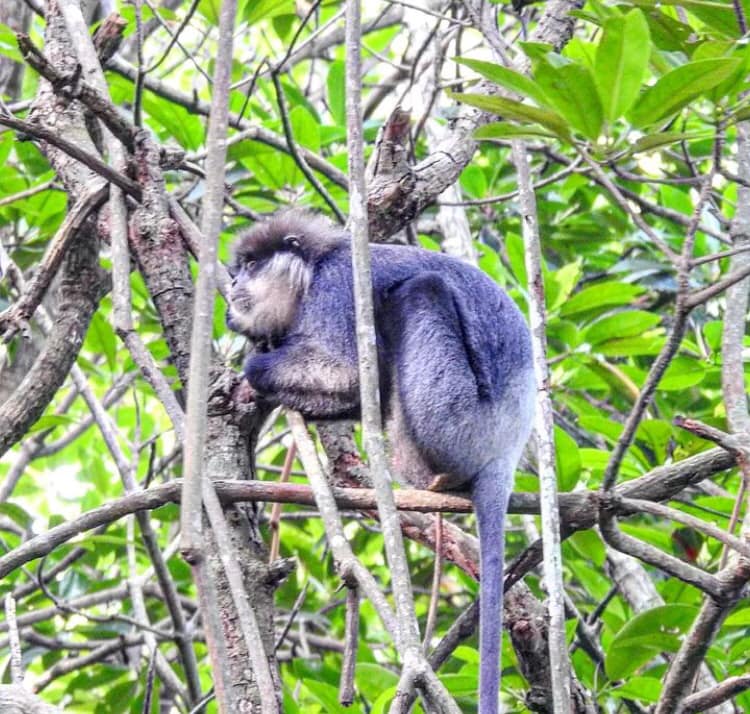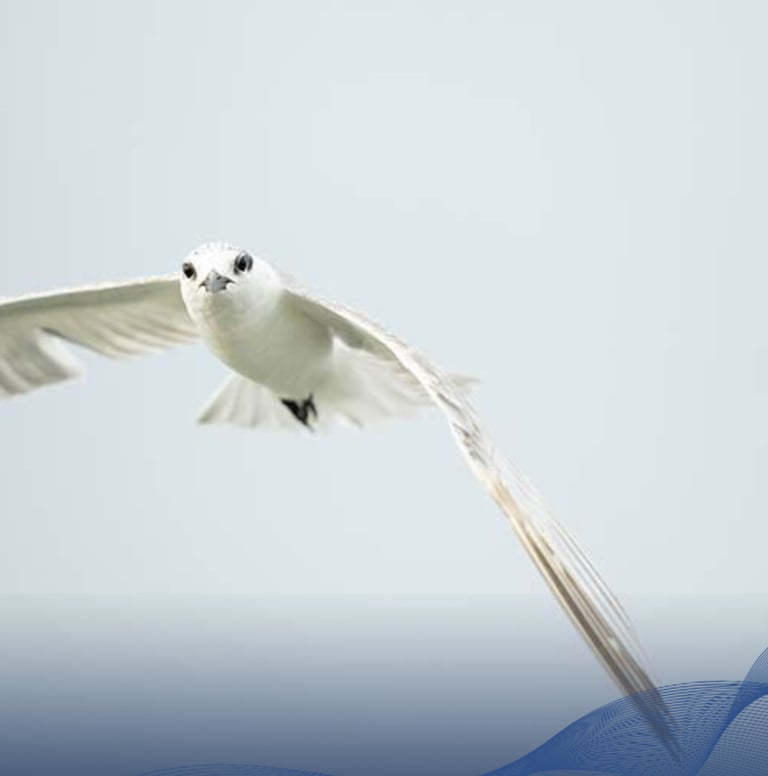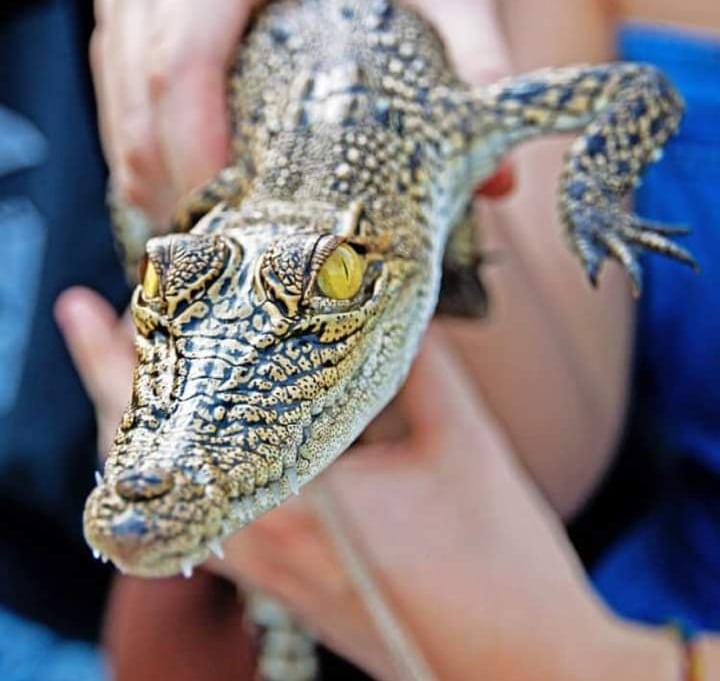

About
madu river
The Madu River is a complex network of lagoons, islands, and canals, formed both naturally and through human intervention. It is the second-largest wetland in Sri Lanka, spanning approximately 21 square kilometers. This area is rich in biodiversity, featuring a variety of plant and animal life, including mangroves, aquatic plants, and numerous species of birds, reptiles, and fish.
One of the river's standout features is its stunning mangrove forests. These dense mangrove areas provide crucial habitats for various species, help prevent erosion, and contribute to maintaining the river's water quality. Boating along the river is a popular activity, allowing visitors to navigate the narrow channels and appreciate the serene beauty of the mangroves up close.
The river is dotted with several small islands, enhancing its appeal. One notable island is Kothduwa Temple Island, which hosts a Buddhist temple. Accessible by boat, this island offers visitors the opportunity to explore the temple and enjoy the peaceful surroundings.
The Madu River is also renowned for its rich biodiversity, particularly its wide range of bird species. Birdwatchers can observe many types of birds, including kingfishers, herons, egrets, and various migratory species, making it a haven for birdwatching.
Visitors can also engage in traditional activities such as fish farming and cinnamon cultivation along the riverbanks, where local fishing villages provide a glimpse into the community's way of life.
In conclusion, the Madu River is a remarkable natural attraction in Sri Lanka, known for its intricate waterways, lush mangrove forests, diverse wildlife, and cultural experiences. It offers a peaceful and immersive experience in nature, making it an essential destination for nature enthusiasts and those looking for a tranquil retreat.
kothdoowa
temple
The Kothduwa Temple, also known as Kothduwa Raja Maha Viharaya, is a Buddhist temple situated on an island in the Madu River in Sri Lanka. It serves as a significant religious and cultural site, attracting both local worshippers and tourists.
Visitors can reach the temple by taking a scenic boat ride along the Madu River, surrounded by calm waters and lush mangrove forests that create a peaceful atmosphere.
The temple itself is located on a small island, enveloped by beautiful greenery and the tranquil river. Believed to be centuries old, it holds both religious and historical significance. One of its most striking features is its architecture, with the main shrine showcasing traditional design, intricate woodwork, and vibrant murals. The complex also includes smaller buildings, meditation areas, and a Bodhi tree, which is sacred in Buddhism.
Devotees come to the temple to worship and meditate, finding statues and depictions of Buddha and other important figures from Buddhist lore within the main shrine. Many visitors participate in prayers, offerings, and seek blessings. Beyond its religious importance, the Kothduwa Temple offers a serene environment for visitors, with its natural surroundings providing an ideal setting for contemplation and meditation.
The well-maintained grounds feature pathways, gardens, and resting spots where visitors can relax and enjoy the tranquility. As you explore the temple, you can absorb the spiritual ambiance, observe devotees in their rituals, and appreciate the expansive views of the river and landscape. A visit to the Kothduwa Temple allows for both a spiritual experience and an appreciation of the local natural beauty, making it a captivating and enriching destination where spirituality, cultural heritage, and nature harmoniously blend.
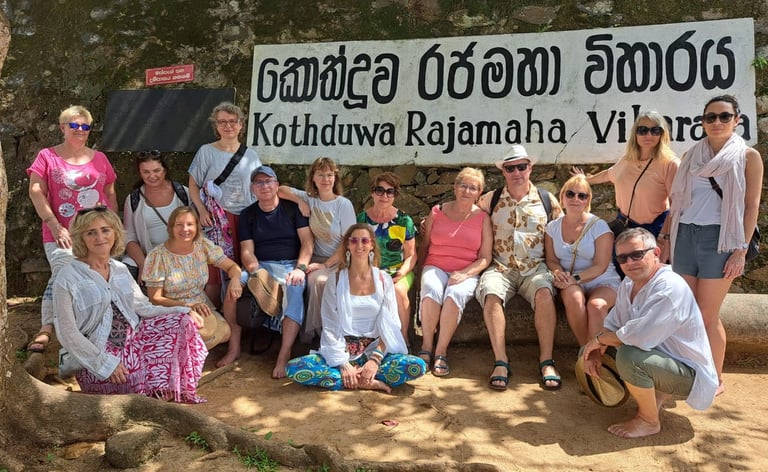

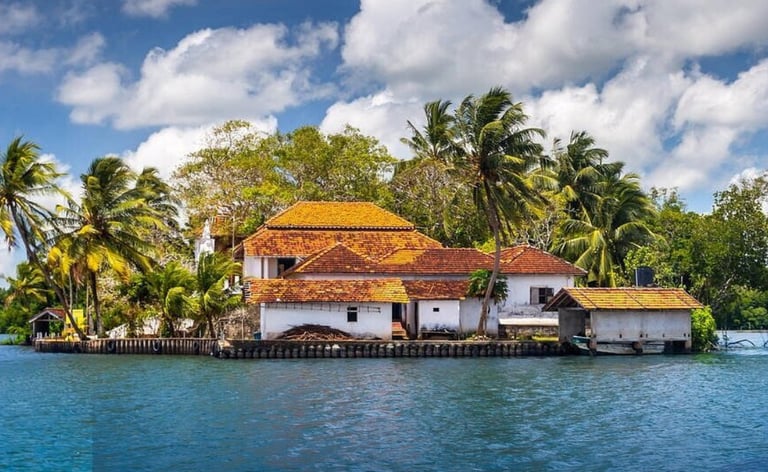


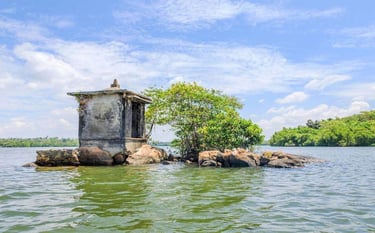
smalled island
The Madu River is enhanced by several small islands that contribute to the area's charm. These islands are scattered throughout the river's channels, each offering a unique experience for visitors. While there isn't a specific island known as the "Smallest Island," I can provide an overview of the smaller islands found in the Madu River.
Typically, these small islands are adorned with mangroves, coconut palms, and other tropical plants. The calm waters of the river create a serene and picturesque environment around them. One of the notable islands is Kothduwa Temple Island, home to the Kothduwa Raja Maha Viharaya. This island attracts many travelers due to the temple's religious significance and the natural beauty of the area.
To reach these small islands, a boat ride along the river is often necessary, allowing visitors to navigate the winding canals and enjoy the stunning scenery. Boat trips also provide opportunities for birdwatching, as various bird species can be spotted along the riverbanks and on the islands.
These islands are also known for traditional activities such as fishing and cinnamon cultivation, with local communities engaging in these practices and sharing insights into their customs.
Exploring the small islands of the Madu River allows you to appreciate the tranquility and beauty of the natural surroundings, observe the local way of life, and experience the rich biodiversity of the region. When planning a visit to the Madu River, it's important to remember that the names and descriptions of the small islands may differ, so it's advisable to consult local guides or resources for the most accurate and current information.
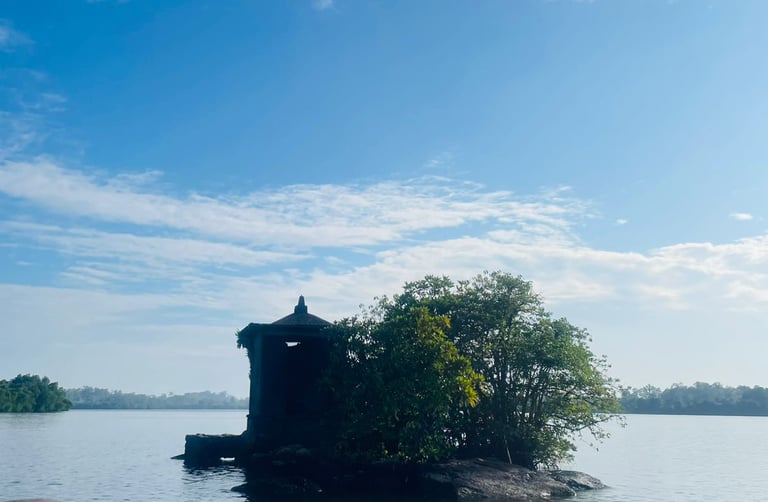

Crocodile
The Madu River is dotted with several small islands that add to its charm. These islands, found throughout the river's channels, each provide a distinct experience for visitors. While there isn't a specific island called the "Smallest Island," there are various smaller islands in the Madu River worth noting. Generally, these islands are lined with mangroves, coconut palms, and other tropical vegetation, creating a peaceful and scenic atmosphere. One prominent island is Kothduwa Temple Island, which hosts the Kothduwa Raja Maha Viharaya. This location draws many visitors due to its religious importance and the area's natural beauty. To access these small islands, a boat ride along the river is usually required, allowing travelers to navigate the winding canals and take in the breathtaking views. These boat rides also offer chances for birdwatching, as numerous bird species can be seen along the riverbanks and on the islands. Additionally, the islands are known for traditional practices like fishing and cinnamon cultivation, with local communities actively involved in these activities and eager to share their customs. Exploring the small islands of the Madu River provides an opportunity to enjoy the peacefulness and beauty of the environment, observe local lifestyles, and experience the region's rich biodiversity. When planning a trip to the Madu River, it's wise to keep in mind that the names and details of the small islands may vary, so consulting local guides or resources for the most accurate and up-to-date information is recommended.



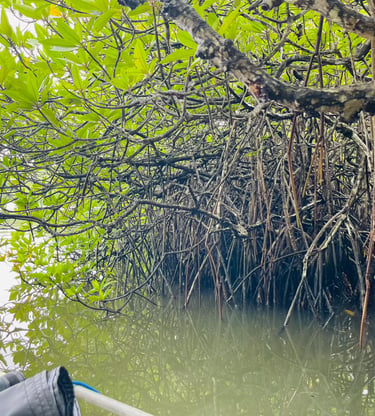
“Mangroves”
Along Sri Lanka's Madu River, there are extensive mangrove forests that play a vital role in the river's ecosystem. Here’s a closer look at these mangroves:
Importance of Mangroves: Mangroves are unique coastal trees and shrubs that have adapted to thrive in intertidal zones where the land meets the sea. They serve as crucial ecosystems by protecting shorelines, reducing erosion, filtering water, storing carbon, and providing habitats for various marine species.
The Madu River is home to several types of mangroves, including the red mangrove (Rhizophora mucronata), grey mangrove (Avicennia marina), mangrove apple (Sonneratia caseolaris), and large-leafed orange mangrove (Bruguiera gymnorhiza). Each species has developed specific adaptations to survive in the soft sediments and brackish waters of this ecosystem.
Biodiversity: The mangroves along the Madu River support a diverse range of flora and fauna. Various bird species, including herons, egrets, kingfishers, and migratory birds, find nesting and feeding grounds among the mangroves. Additionally, fish, crabs, mollusks, and other young marine creatures utilize the intricate root systems of the mangrove trees as nurseries and shelters.
Tourists often enjoy boat tours and mangrove excursions to explore the Madu River. These trips allow visitors to navigate through narrow channels and appreciate the stunning beauty of the mangroves up close. Local guides and boat captains provide valuable insights into the mangrove ecosystem, its importance, and the wildlife that inhabits the area.
However, like many mangrove ecosystems, the mangroves in the Madu River face threats from habitat loss, pollution, and unsustainable human activities. Conservation efforts are underway to promote sustainable tourism, community engagement, and awareness of the importance of protecting these vital wetlands.
Visiting the mangroves in the Madu River allows people to observe the intricate root structures, lush greenery, and the delicate balance of this unique ecosystem. It offers a chance to witness the interaction between land and water while highlighting the importance of preserving these invaluable natural habitats.
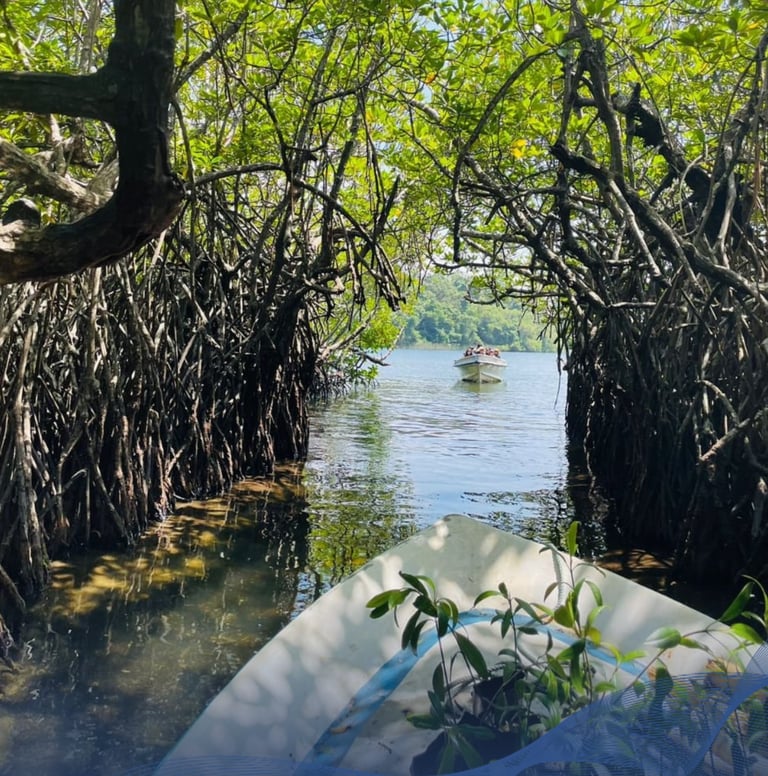

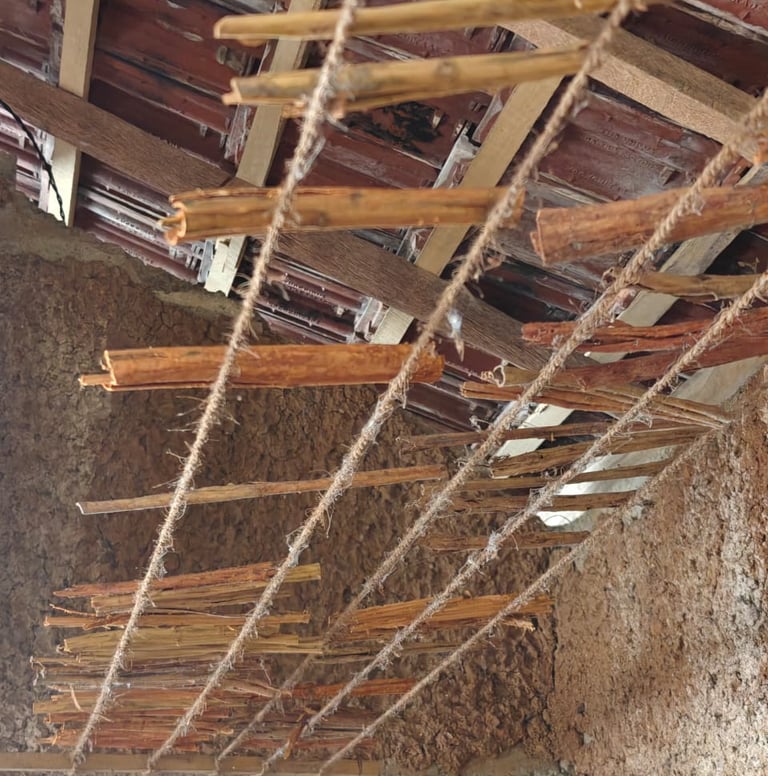

“Cinnomon life in madu river”
Along Sri Lanka's Madu River, there are extensive mangrove forests that play a vital role in the river's ecosystem. Here’s a closer look at these mangroves:
Importance of Mangroves: Mangroves are unique coastal trees and shrubs that have adapted to thrive in intertidal zones where the land meets the sea. They serve as crucial ecosystems by protecting shorelines, reducing erosion, filtering water, storing carbon, and providing habitats for various marine species.
The Madu River is home to several types of mangroves, including the red mangrove (Rhizophora mucronata), grey mangrove (Avicennia marina), mangrove apple (Sonneratia caseolaris), and large-leafed orange mangrove (Bruguiera gymnorhiza). Each species has developed specific adaptations to survive in the soft sediments and brackish waters of this ecosystem.
Biodiversity: The mangroves along the Madu River support a diverse range of flora and fauna. Various bird species, including herons, egrets, kingfishers, and migratory birds, find nesting and feeding grounds among the mangroves. Additionally, fish, crabs, mollusks, and other young marine creatures utilize the intricate root systems of the mangrove trees as nurseries and shelters.
Tourists often enjoy boat tours and mangrove excursions to explore the Madu River. These trips allow visitors to navigate through narrow channels and appreciate the stunning beauty of the mangroves up close. Local guides and boat captains provide valuable insights into the mangrove ecosystem, its importance, and the wildlife that inhabits the area.
However, like many mangrove ecosystems, the mangroves in the Madu River face threats from habitat loss, pollution, and unsustainable human activities. Conservation efforts are underway to promote sustainable tourism, community engagement, and awareness of the importance of protecting these vital wetlands.
Visiting the mangroves in the Madu River allows people to observe the intricate root structures, lush greenery, and the delicate balance of this unique ecosystem. It offers a chance to witness the interaction between land and water while highlighting the importance of preserving these invaluable natural habitats.
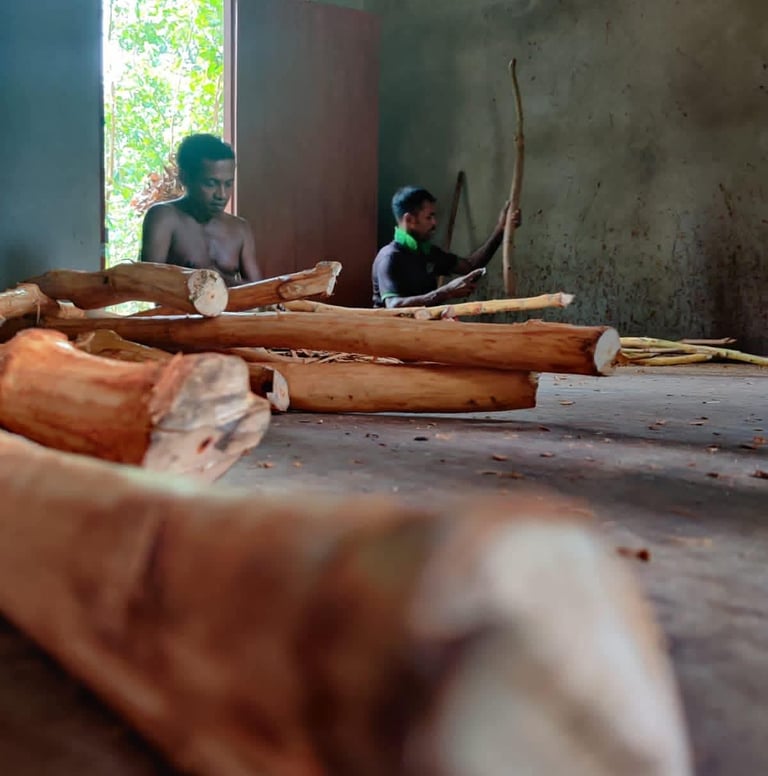

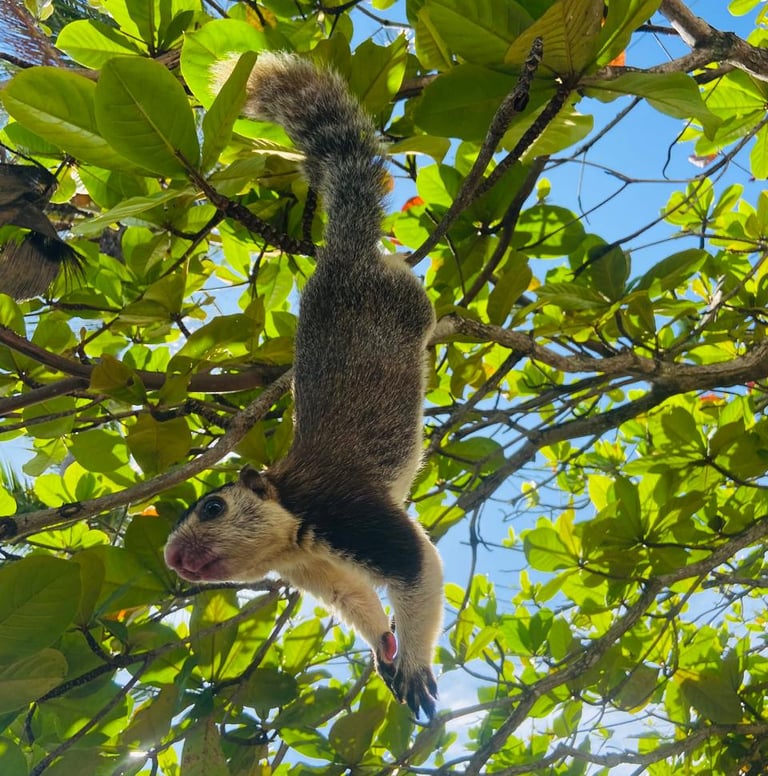

“Specias in Madu River”
Along Sri Lanka's Madu River, there are extensive mangrove forests that play a vital role in the river's ecosystem. Here’s a closer look at these mangroves
Importance of Mangroves: Mangroves are unique coastal trees and shrubs that have adapted to thrive in intertidal zones where the land meets the sea. They serve as crucial ecosystems by protecting shorelines, reducing erosion, filtering water, storing carbon, and providing habitats for various marine species.
The Madu River is home to several types of mangroves, including the red mangrove (Rhizophora mucronata), grey mangrove (Avicennia marina), mangrove apple (Sonneratia caseolaris), and large-leafed orange mangrove (Bruguiera gymnorhiza). Each species has developed specific adaptations to survive in the soft sediments and brackish waters of this ecosystem.
Biodiversity: The mangroves along the Madu River support a diverse range of flora and fauna. Various bird species, including herons, egrets, kingfishers, and migratory birds, find nesting and feeding grounds among the mangroves. Additionally, fish, crabs, mollusks, and other young marine creatures utilize the intricate root systems of the mangrove trees as nurseries and shelters.
Tourists often enjoy boat tours and mangrove excursions to explore the Madu River. These trips allow visitors to navigate through narrow channels and appreciate the stunning beauty of the mangroves up close. Local guides and boat captains provide valuable insights into the mangrove ecosystem, its importance, and the wildlife that inhabits the area.
However, like many mangrove ecosystems, the mangroves in the Madu River face threats from habitat loss, pollution, and unsustainable human activities. Conservation efforts are underway to promote sustainable tourism, community engagement, and awareness of the importance of protecting these vital wetlands.
Visiting the mangroves in the Madu River allows people to observe the intricate root structures, lush greenery, and the delicate balance of this unique ecosystem. It offers a chance to witness the interaction between land and water while highlighting the importance of preserving these invaluable natural habitats.
